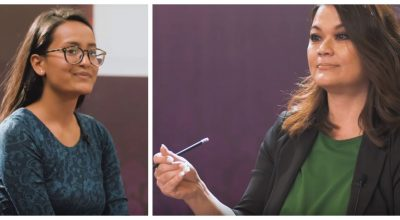Fashion, being one of the biggest industries in the world, holds the power to make people perceive a lot of things. In this growing industry, one of the most overlooked concepts is its beauty standards and how it has affected a lot of people around the world. These bodily limitations have not only made many people insecure regarding their physique but also impacted their mindset.
In the field of fashion, the human body is generally categorized into five types: rectangle, hourglass, triangle, inverted triangle, and circle. Among these types, the hourglass is considered to be the best type of body, where the bust and hips are of almost the same size and the waist is comparatively very much narrower than them. Due to this pressure of having the best type of body, a lot of well-known celebrities have undergone surgeries to get it. The most notable examples are Kim Kardashian and Kylie Jenner, who have got millions of followers on their social media platforms. However, for runway modeling, rectangle body types are highly preferred.
The limitations not only end in terms of body type but there are also criteria on height. The female models should be a minimum of 5’ 7” or 5' 8” while men are required to have a minimum height of 5’ 11” or 6”. Besides this, the models are also required to have clear skin with no acne or pimples, perfectly placed teeth, well-shaped ripped bodies, and good voluminous hair. So we can clearly see how the body limitation has been created in the fashion industry.
Such limitations have created a hurdle for a lot of people who want to get into this profession or just want to feel good about themselves. Since the models are highly featured in advertisements, people can get a very easy look at their bodies and faces, and this creates an impression that only such people are beautiful and others are not. This leads to body dysmorphia and eating disorders among the common folks, which may lead to hampering health issues.
To get that perfect model body, the models go through a lot, even up to the extent of suffering themselves. Statistics about eating disorders show that more than 40% of models engage in disordered eating, which may be higher according to the experts. Other statistics show that about 39% of models have taken IV drips to offset malnourishment from eating disorders and 25% of models have reportedly used self-induced vomiting behaviors. One of the most infamous headlining examples of this is the supermodel Gigi Hadid, whose eating has been excessively controlled by her mother, Yolanda Hadid, from a very young age. Gigi was not allowed to eat her own birthday cake and when she felt weak from hunger, she was advised to eat a few almonds by Yolanda. Later, when she was invited to a talk show, The Tonight Show Starring Jimmy Fallon, she was given a burger to eat by the host Jimmy Fallon, which was applauded by the audience.
Even the common people have been a victim of these industry standards and many of us want to look like the models we see. This has caused people, especially youngsters to hate their bodies. One common thing that we usually see in these models is that they are tall, slim, and fair, which have been a beauty standard for everyone. Even today, many women reject men because of their height, and many men reject women because of their weight. Darker-skinned people are still taunted with names, which has further ignited the spark.
Reports have shown that many youngsters are facing the issue of low self-esteem due to their bodily features. In men, the insecurities are generally about being less muscular, height, acne, hair thinning, hairline, weight, and facial hair, whereas in women, the concerns are mostly about weight, facial hair, complexion, height, acne, and shape of the nose. Also, gay and bisexual men tend to be more vulnerable to body image than straight men. Due to these issues, people tend to avoid social gatherings and feel discomfort even in their day-to-day lives.
On a positive note, we can see that the fashion industry is getting more inclusive and diverse, however, the pace is very slow and it is going to take a lot of time to completely eradicate these standards. Efforts are being made by some people in power. For example, Rihanna has included models with different body shapes and skin complexions, and even differently-abled people for her brand, Fenty Beauty. Another brand TomboyX has also created collections featuring diverse groups of people from different body types, sexualities, ethnicities, etc.
Different models in the industry have crossed the border of beauty standards. For instance: Winnie Harlow is a supermodel with a skin condition called vitiligo, while Ashley Graham is the first plus-size model. Donyale Luna was the first black model who started her career during the late 1960s. RJ Mitte, an American actor, with cerebral palsy, walked on the ramp for Vivienne Westwood in 2015. Viktoria Modesta, Paola Antonini, Lauren Wasser, and Jack Eyers, to name a few, are the models with prosthetic legs. From these examples, we can say that the industry is steadily but surely developing.
If the pace of inclusivity and diversity is increased then I'm pretty sure that the change is going to happen much sooner than expected. We see that the smaller fashion brands have started to break the chain and it is important for the big fashion houses to do the same. There shouldn’t be criteria for physical features that cannot be changed and the people holding the position in these companies should be aware of how their small decisions can affect the masses.
Another potential strategy is to portray different types of human characters in movies and TV shows, and they should be treated as normal people. Media has the power to change the mindset of people and this will definitely help. Some popular examples of inclusivity and diversity in TV and movies are Walter Jr. with cerebral palsy in Breaking Bad, the plus-size portrayal of Kat Hernandez in Euphoria, Black Mermaid in the live-action version of The Little Mermaid, etc.
Hence, we can conclude that the fashion industry body standards have not only affected the people in the industry but also on people outside the industry, and it has taken some serious turns in the present day. Also, the change is happening and we hope that the change happens sooner.












No comments:
Post a Comment